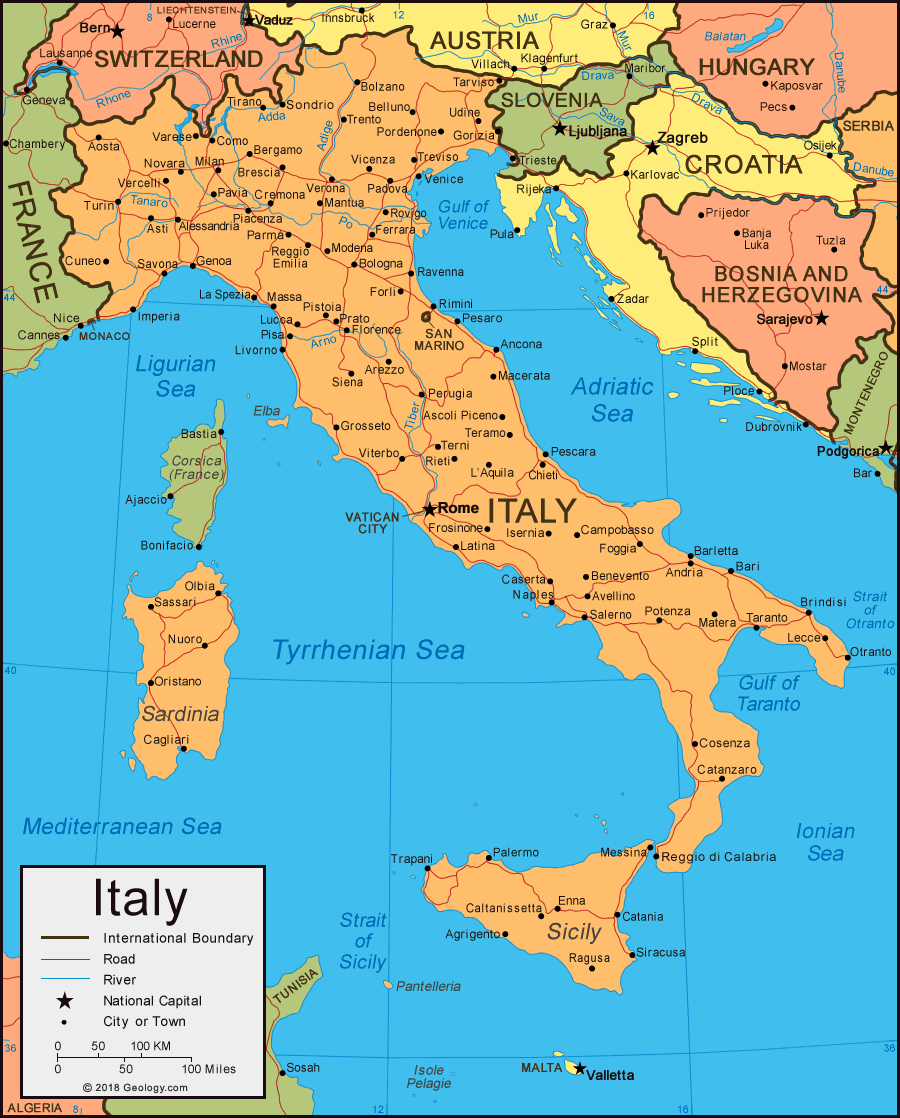Italy Travel Guide to Top Tourist Attractions

As the Roman Empire's birthplace and where the Renaissance originated, it's no shocking surprise that Italy must be overflowing with gorgeous architecture, masterpieces, or that no other country in the world can come even close to rivaling it in respect of having far more UNESCO World Heritage sites.
However, Italy's best-ranking attractions for visitors aren't all the marvelous art and architecture; it's the country's breathtaking mountains, lakes, and a spectacular coastline which give it excellent natural attractions, in addition. You can plan a whole itinerary inspired by only one interest, ranging from Renaissance art, scuba diving, hiking, to sunbathing, though most tourists coming here for the first time want to sample nothing but the best of what Italy offers in many various types of experiences.
The attractions listed below are meant to show off Italy's history, art, architecture, striking landscapes, as well as provide the sweetest opportunities for energetic pursuits. To ensure that you do not overlook anything particularly significant and worth visiting, use this Italy travel guide to find the top tourist attractions in Italy as you plan your itinerary.
1) Colosseum. This massive amphitheater, the biggest of its type that the Roman Empire ever constructed as well as the largest of their buildings to survive as undeniable proof of their ingenuity, today still remains a fine example for sports facilities. Constructed by Vespasian and completed in AD 72, plus expanded when his son added a fourth story, it became a site for shows and public spectacles, including mock sea battles as if to relive old sea victories over their enemies.
A wooden floor, 83 by 48 meters, covers 2 more underground levels with tunnels, cells, rooms, and even passages which provide space for gladiators, wild beasts, workers, and storage.
But today the building stands in sharp contrast to the surrounding modern development and is a prime reminder of both ancient times and the Romans' far-reaching, lasting impression.
2) Florence Duomo Santa Maria del Fiore. Reputed as the world's foremost finest cathedral, the Cathedral of Santa Maria del Fiore monopolizes the Florence skyline. Constructed between 13th and 15th centuries, the cathedral had the most celebrated piece, the outstanding dome, finished in 1434 by Filippo Brunelleschi.
The cathedral's bell tower which stands near next to the cathedral in Piazza del Duomo, covers in similar patterned marble common of Tuscan Romanesque architecture.
Giotto designed the campanile which, standing 82 meters high, you could climb all the 414 steps to a viewing platform that boasts incredible views of the dome and the city.
Opposite the Duomo you'll find a remarkable baptistery, famous for its paneled doors of bronze by Lorenzo Ghiberti. Now you can tour the Museo dell'Opera del Duomo to see the real beautifully crafted panels, having been replaced by same replicas for protecting the originals from the element's destructive effect.
3) The Grand Canal in Venice. The tradition of a gondola trip that takes one through the Grand Canal in Venice, travelers have been adoring for centuries. As a city of islands, the canals have been as forever Venice's main streets that are united by a maze of narrow passageways.
As the biggest and most renowned of these water ways, the Grand Canal cuts a broad S-shaped path through the city. Along the way you'll see the greatest palaces still standing proudly where the most powerful and the richest families once owned. The best manner to see several of such amazing palaces is to ride a Vaporetto through the Grand Canal.
But make certain that your gondola trip and sightseeing explorations by foot include better atmospheric smaller canals, so you'll see lines of older structures which have remained largely the same for ages.
4) Pompeii & Mount Vesuvius. Though the Mt. Vesuvius still smokes while looking down on Pompeii's remains, destroying it in AD 79, the same eruption preserved several of the city's timeless art treasures that include from mosaics, frescoes to sculptures which the lava encased after cooling.
Many excavations that followed have been revealing the remains that include from homes, baths, markets, theaters, temples, streets to human remains. Tourists could visit the site by walking along the ancient streets that racing chariots once scarred and see the amazing feat of engineering that Romans used over 2,000 years ago.
Close to Pompeii you'll find the excavated old city of Herculaneum, which the same eruption destroyed back in AD 79, except lava and ash burying it that resulted in solidifying and freezing it and the town becoming how it was. Now you have the option to combine tours to the 2 sites in only one day; however, a long stay permits time for climbing to the rim of yet active Vesuvius.
5) Leaning Tower of Pisa. The Leaning Tower of Pisa's world fame does not actually come from the design's substantial elegance, but because of a major flaw. Construction started in 1100s, but sinking that led eventually to the lean, initiated when the tower reached the stage in construction where the third story was built.
As the tower began leaning more and more through the centuries, prior to being restored in the 1990s, experts predicted it would just end up falling down in the year 2000. But today, defying all such predictions, tourists could climb up the tower's stairs to enjoy a fantastic sight over the city.
Standing on the Piazza dei Miracoli, the Leaning Tower shares the setting with a rounded freestanding baptistery and the lovely Romanesque Cathedral of Santa Maria Assunta, which features excellent works of medieval stone carving.
Fired Travel Agent Tells the Public the Airline's Dirty Secrets, How to Turn Them Around In Your Favor, Including How to Fly Practically Free!
